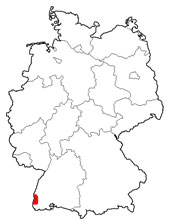Subspecies
No subspecies are recognized.
Synonyms
Brephos nothum touranginii Berce, 1870
Brephos notha touranginii Berce, 1870
Archiearis touranginii (Berce, 1870)
Boudinotiana touranginii (Berce, 1870)
Brephos notum tourangini auct. (misspelling)
Archiearis tourangini auct. (misspelling)
Note: the status of the taxon touranginii is unclear. It has long been regarded as a synonym of the taxon notha, but many recent authors regard it as a separate species. Interestingly, the two taxa apparently share identical barcodes (the short stretch of genomic DNA sequence that is used to re-identifiy species by molecular methods). Thus, the two taxa cannot be separated on the basis of their barcode sequences (Hausmann et al. 2013). This might indicate that the two taxa are indeed identical, or that they are not diverged at the level of the genomic portion that is used for barcoding. I provisionally retain the two taxa here as separate species until more information on their status becomes available.
Brephos notha touranginii Berce, 1870
Archiearis touranginii (Berce, 1870)
Boudinotiana touranginii (Berce, 1870)
Brephos notum tourangini auct. (misspelling)
Archiearis tourangini auct. (misspelling)
Note: the status of the taxon touranginii is unclear. It has long been regarded as a synonym of the taxon notha, but many recent authors regard it as a separate species. Interestingly, the two taxa apparently share identical barcodes (the short stretch of genomic DNA sequence that is used to re-identifiy species by molecular methods). Thus, the two taxa cannot be separated on the basis of their barcode sequences (Hausmann et al. 2013). This might indicate that the two taxa are indeed identical, or that they are not diverged at the level of the genomic portion that is used for barcoding. I provisionally retain the two taxa here as separate species until more information on their status becomes available.
Identification
Forewing length 11-14 mm. Extremely similar to Archiearis notha, but
significantly smaller. Also some differences in the morphology of the
male genitalia.
Special characters in the larva: in contrast to the larvae of higher geometrid moths, the larvae of the present species retain all four proleg pairs. However, the prolegs on abdominal segments 3-5 are shorter than the proleg pair on abdominal segment 6, thus illustrating an evolutionary intermediate between the fully developed prolegs in the lepidopteran ground plan and the fully reduced prolegs on abdominal segments 3-5 in the higher Geometridae.The larvae are initially green with dark head, but later become darker green, with blackish green stripes, and shortly before pupation turn partially purple (Trusch et al. 2016). The pupae are purplish-brown, dark and about 10 to 15 mm long (Trusch et al. 2016).
Special characters in the larva: in contrast to the larvae of higher geometrid moths, the larvae of the present species retain all four proleg pairs. However, the prolegs on abdominal segments 3-5 are shorter than the proleg pair on abdominal segment 6, thus illustrating an evolutionary intermediate between the fully developed prolegs in the lepidopteran ground plan and the fully reduced prolegs on abdominal segments 3-5 in the higher Geometridae.The larvae are initially green with dark head, but later become darker green, with blackish green stripes, and shortly before pupation turn partially purple (Trusch et al. 2016). The pupae are purplish-brown, dark and about 10 to 15 mm long (Trusch et al. 2016).
Distribution

Distribution map of Archiearis touranginii in Germany.
Originally only known from central France, but recently reports from other locations in France and Spain accumulate (Trusch et al. 2016). The reason for this range expansion is currently unclear. The first record for Germany is from western Baden-Württemberg (Grißheim) in 2005 and more specimens were collected at that location in 2015 and 2016 (Trusch et al. 2016). The species is extremely rare in Germany.
Biology
The imagines fly in the second half of March and feed on the catkins of
several Salix species. Similar to the other species of the genus, the
imagines fly and pair up mainly during midday and later in the day can
be found resting in the vegetation. Males and females form a copula that
separates after 9 to 12 hours (i.e. during the night) and the females
then begin ovipositing the next morning (Trusch et al. 2016).
The larvae feed on willow, apparently exclusively on Salix purpurea,
and thus the occurrence of the species is tightly linked to the
occurrence of sufficiently large populations of the host plant. Larvae
can be found from late March until late April and then bore into the
bark where they also pupate. They overwinter as pupa and eclose in the
next spring.